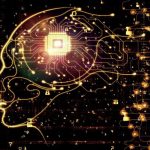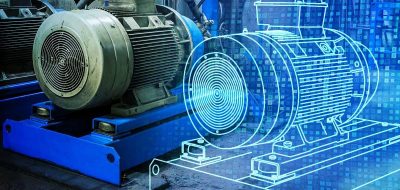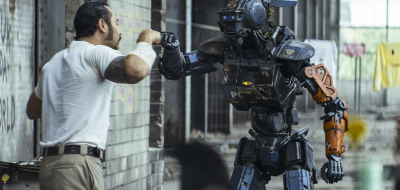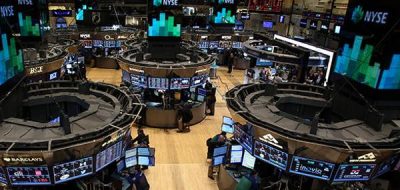Virtual representations of physical objects, gracefully dubbed digital twins, are replacing physical prototypes. Their most fascinating feature is their ability to communicate with their physical counterparts with which they exchange information at all times. The significance of such exchanges has not gone unnoticed by automotive and aviation manufacturers and skyscraper developers.
For many years, engineers have struggled to resolve a certain unsolvable problem. The finished versions of the machines and structures they designed, be it vehicles, equipment or buildings, tended to perform differently than those originally envisioned at the design stage. Needless to say, defects, flaws and anomalies are a relatively common occurence in technical devices. In fact, at certain development stages, they are even expected. The problem in production arises when their removal and detection becomes very costly and/or difficult. While fixing a defect in a car engine is a relatively easy affair, a rocket engine may present a challenge of a whole different magnitude.
Twins conceived in NASA lab
All of the world’s factories and design offices asked about a way to detect anomalies in the items being designed earlier. Is it possible, they wanted to know, to better monitor production and better predict the behavior of finished products? The questions seemed rhetorical. But only up to a point. The idea to create digital simulations of items in development came from NASA engineers. NASA physicists, mathematicians and programmers set out on creating virtual models that would reflect ever more accurately the actual characteristics of the machines they were designing and their performance. Since all this thinking and efforts centered on space engines and spacecraft, their determination to finally resolve the persistent challenge seemed understandable. Until then, any flaw detected while a device orbited the Earth had to await for resolution in a long queue. Obviously, before anything could be done, the spacecraft had to land on Earth. One can only imagine the logistical nightmare and the exorbitant cost of such operations.
The awakening of computers
It was hoped to come to the rescue. Advances in computer technology, the growing computational power of machines and software improvements helped create 3D images that better depicted the designed structures. The biggest challenge was to make these 3D renditions “think”. And make them be more than an effective animation that only shows how real objects work. Gradual progress was made by integrating the images with a wide range of information and data types. The picture was no longer just graphics. It became a realistic three-dimensional object that could “mimic” the performance of its physical counterpart. It showed its weight, energy consumption, interactions with other components, and performance during regular use. And although the simulations were continually perfected, an impassable barrier would always remain separating the virtual model and its physical counterpart. Any flaws of a newly-designed rocket engine would be detected in tests. Only then would the virtual model be examined, after which the design was adjusted and the tested device reengineered.
The children of AI
Eventually though that long-anticipated breakthrough was finally made. Its arrival conincided with the birth and adolescence of digital twins. This relatively new development was linked closely to advances in information technology over the last few years and, in particular, the development of virtual reality, the growing computational power of computers, and the birth of technologies, such as augmented reality and the Internet of Things. All these combined had a massive impact on the quality leap made in creating digital representations. Deep learning played a huge role, based on its fundamental principle of systems self-improving through processing successive information. Artificial intelligence revealed its great potential. The engineers’ dream was coming true; the digital prototype finally gained the capability to exchange information with its physical twin in real time.
Imperfect objects talk about themselves
Today’s digital twins are another dimension of both the design and the total management of the development of an engine, building, vehicle, or machine. The groundbreaking ability is about observing – in real time – every process that takes place in the item being developed and deployed. The item “comes to life”, as it were, as it sends datastreams on its performance to the concerned experts. Datastreams can then be used to improve the design by diagnosing and rectifying its shortcomings. In other words, the digital twin is a computer model capable of using current and historical data retrieved from various devices. It can simulate critical processes such as failures or unforeseen system quirks. All this dynamic exchange of information between the real object and its digital rendition would not be possible were it not for the Internet of Things and broadly-defined Big Data or, briefly put, the ability to process huge volumes of data that are sourced from various objects. Their transfers are made possible by sensors that communicate with one another. Such sensors can be embedded in a building wall, a car, a coffee maker or a rocket engine.
Technology appreciated by giants
Today, the technology is used by the automotive, aviation and mining industries. Tesla uses it both to detect flaws in finished vehicles and to simulate the development of new solutions. Volkswagen has set up a dedicated virtual prototype unit at its Wolfsburg center. All this allows datastreams to flow from production lines to process-control computers, which process them and “send” their proposals back to assembly lines. The technology could not develop further without software evolution. One of the companies that offers such software today is Microsoft. Microsoft’s Azure platform, which is an integrated set of IT tools, enables programmers to create complex models in the cloud. The platform can perform a range of calculations and predictive analyses using data from many sources.
Digital twins to change cities and health care
According to the research company Gartner, digital twins are set to earn the respect of successive industries in the coming years. Costly prototypes will be replaced with computer simulations effectively reducing production costs. Notably, this innovative technology is not only about convenience and computational accuracy. It will be a game changer in economies. Interesting scenarios involving digital twins are likely to be seen in the near future. Here is one of those cases when a digital innovation achieved in one slice of reality triggers a series of events. Digital twins may help modify some of the most complex object management processes. Sophisticated simulations will help managers manage buildings and production halls. Even today, ideas are being developed to employ the technology for complex spatial planning, the building of cities and to study the behaviors of humans communities. Digital replicas turn out to be perfectly suited for studying the performance of buildings exposed to changing weather conditions and the presence of people. The innovative technology has already caught the interest of the medical community. Data from electronic bands worn by patients is transferred to computers, processed and used to modify the operation of the medical devices used in treatment.
Digital twins are a remarkable example of bringing digital information into our lives. The above shows just how close technology has come to our lives: no longer an external entity, it almost ends up in our bloodstream. With its huge innovative potential, it can surprise us in many ways. It may well become the key to improving a wide range of processes.
. . .
Works cited:
Wikipedia, Digital Twins, Link, 2021.
Expeditors, Jarrett Hendricks, Rise of the Digital Twin: How Lessons Learned from NASA Are Changing the Way Supply Chains Are Managed, Link, 2021.
Gartner, Christy Pettey, Prepare for the Impact of Digital Twins, Link, 2021.
. . .
Related articles:
– The quantum internet: a nightmare from a spy dream
– Will quantum computers enable us to defy the laws of physics?










TomK
Great post
NorTom2
From my searching, there’s *nothing* readily available for creating digital twins using UE. I’m betting on Epic spreading more into the space in the future given how they’re pushing harder into more industries (eg, film and archviz), but for now you’re like how most game dev is- you’ll need to learn piece by piece and figure out how to put everything yourself.
Furthermore, Unreal’s documentation *still* isn’t that great. For example, Unity has had a vast variety of tutorials on practically everything for years now (including a bit on digital twins) yet Unreal is still slowly getting far more accessible quality tutorial content.
If you’d want a direct path to creating digital twins using UE, your best bet is networking and learning from someone who’s already doing that.
However, otherwise you need to start where solo indie game devs start with Unreal while trying to do something not run of the mill- at the very beginning, learning bit by bit with very small scope as there’s a whooole lot of pieces to learn.
Zidan78
I could give more specifics regarding where you could perhaps start learning, but your scope is currently pretty vague (ie, I’m not sure what you’re looking to create first). All I can say is that you have a whole lotta complex programming coming your way
Simon GEE
How close to “accurate” are you aiming for the digital version to be? Eg, if creating a car, are you aiming to have the finest details down to how the combustion engine works on a mechanical level or more so recreating just the driving physics?
Technically anything is (nearly) possible if you have the given technical know how. But the difference in exactly how similar to reality you want your digital representations to be will be huge in what and how much you need to learn- eg, only needing to learn enough to tweak Unreal’s driving default project vs learning how to create (efficient) physics simulation from scratch
CaffD
I’m pretty new to Unreal Engine (actually any game engine tbh). I am a mechanical engineering student and one of my interests is CAE and digital twin creation. For people hearing this for the first time, basically what it means is that I am interested in making accurate digital versions of real world dynamic systems, say, an automobile, a wind turbine or an IC engine or any dynamic real world system for that matter.
Apparently, game engines are a good tool for visualizing the mechanisms, even though they’re not primarily an engineering software. What I really love about Unreal engine (and what made me chose UE over Unity) is UE’s Datasmith*.* I like how easy it is to import my CAD stuff into the engine without having to do all the ‘retopology’ stuff (pardon me if that didn’t make any sense cuz I’m an absolute noob when it comes to CG terminology). Unity’s counterpart for Datasmith (‘PIXYZ’ plugin) is insanely unaffordable for a student.
Why not just use CAE software you ask? They simply just provide us with nice simulations and all but nothing interactive, like a game.